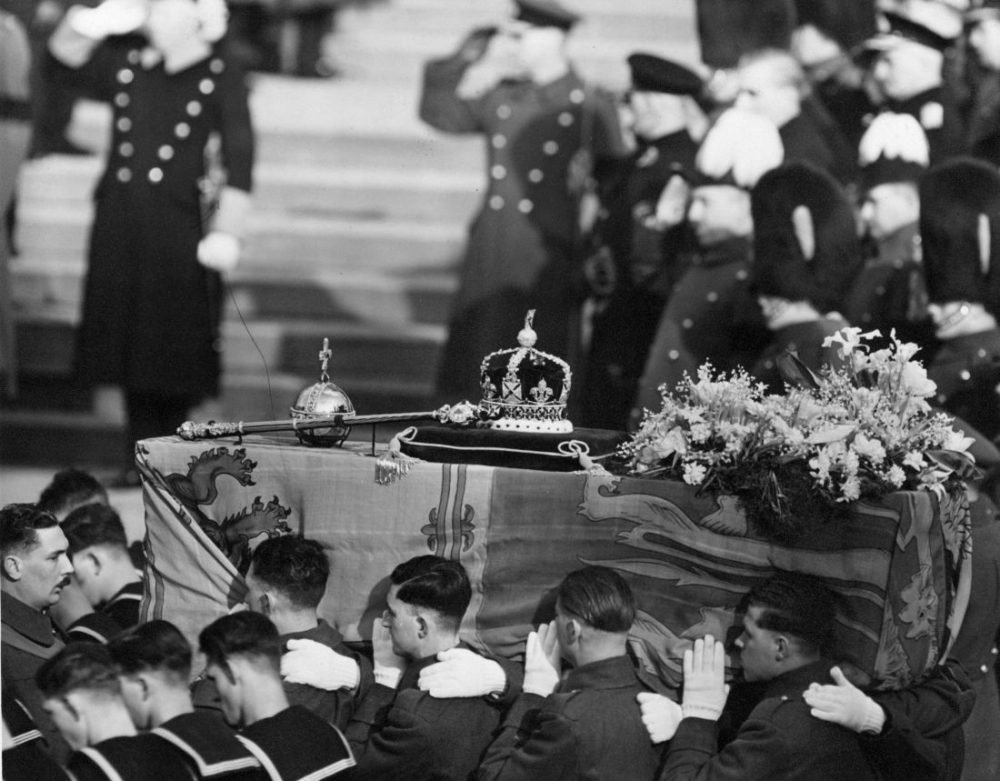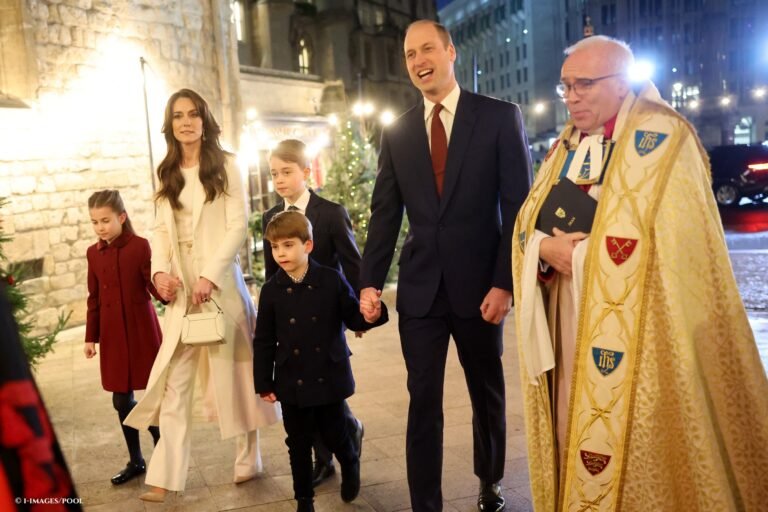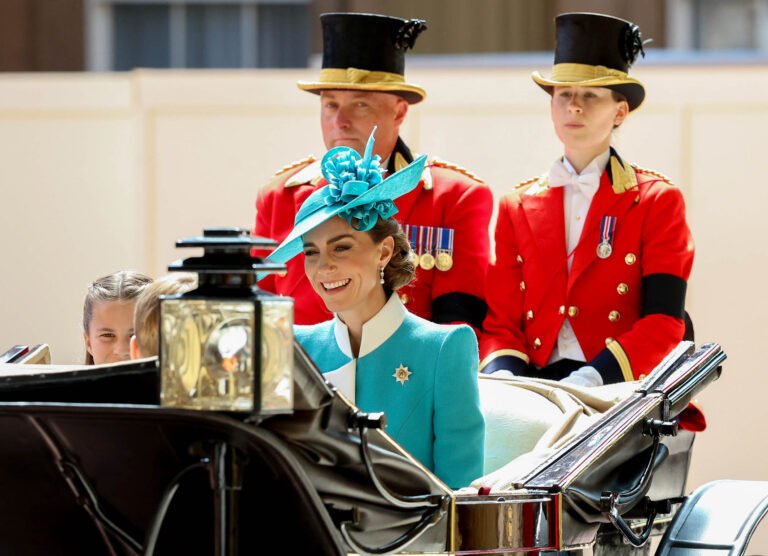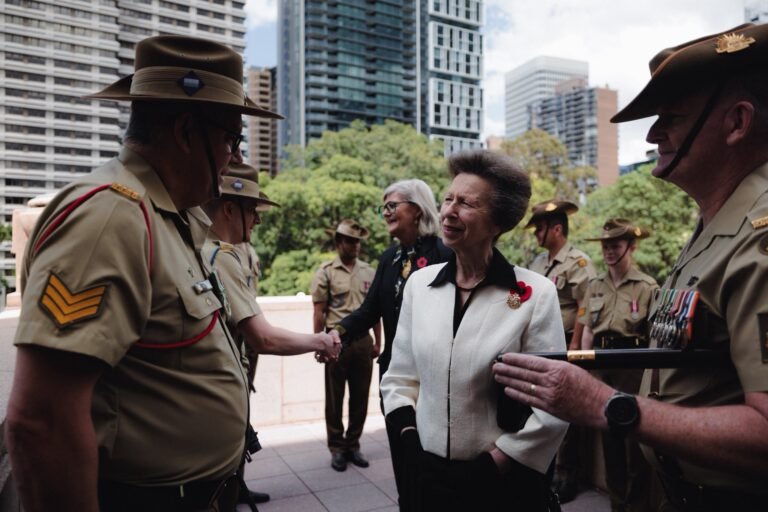Further to our article about how The Queen’s death will be announced when that sad day comes to pass, here is what will happen at Her Majesty’s State Funeral.

After The Queen dies:
Following the appropriate procedures to the body for burial, it will be transported from the location of death to London, where the late Monarch will lie in state for four days in Westminster Hall. Here, the public will be able to pay their respects before the funeral.
Black Rod, the Lord Great Chamberlain, the Lord Chancellor and the Speaker – all in ceremonial dress – will begin the procession into the hall, followed by the Dean of Westminster, the Chaplain to the Archbishop of Canterbury, and the Archbishop of Canterbury. Immediately preceding the coffin will walk The Queen’s Lord Chamberlain, and the Crucifer carrying the Processional Cross, taken from Westminster Abbey and which will remain at the head of The Queen’s coffin as she lies-in-state.
Draped in a Royal Standard with the Imperial State Crown, the orb and sceptre and the insignia of the Order of the Garter on top, the coffin will sit on a catafalque in the hall, guarded by members of the Sovereign’s Bodyguard (Gentlemen at Arms and the Yeomen of the Guard) and the Household Division; they will also be involved in the funeral procession. The crown on a cushion replaced an effigy from Charles II’s death in 1685.
A vigil of The Queen’s male children and grandchildren will likely be kept the night before the funeral, like that of ‘The Four Princes’ for the Queen Mother’s death, and George V. They will briefly take over from the soldiers keeping watch.
The Funeral:
Within two weeks of the death, a funeral will take place, with all the details having been decided in advance, in what is known as ‘Bridge’ within the palace, the codename for the event.
Previously, coffins were transported by train back to London, however The Queen’s body will be flown from Edinburgh to London.
George VI’s procession lasted almost three hours as it plodded through central London to Paddington station, heading for his final resting place at Windsor.
For the procession, the coffin will be lain on a gun carriage drawn by sailors of the Royal Navy. This tradition began after the horses due to pull Queen Victoria’s coffin bolted, and were quickly replaced with seafaring men.
As a state occasion, leading public figures from across the globe will be in attendance – including foreign Royals – with Prince Charles leading the Royal Family and the nation in grief. Preceding the cortege will be the Earl Marshal and his officers the Heralds, and Chief mourners, i.e. the Royal Family immediately follow the coffin, along with foreign and Commonwealth representatives.
Naturally, it will be heavily guarded with armed and plain clothed officers, and military bands will play music, eerie as the crowds remain silent.
Tradition dictates the coffin will be borne by Grenadier Guards (as the first foot division) into the service, which will take place at Westminster Abbey.
However, her final resting place lies at St George’s Chapel at Windsor Castle, alongside Prince Philip. Since 1820, all Monarchs have had their funeral service and been interred here, including George VI.
If this is the case, this means the coffin will head to Paddington Station from Westminster Hall, be place on a train for Windsor, accompanied by the Royal Family and other mourners, then resume the procession from the train station to the chapel.
In accordance with the last funeral services of a Sovereign, the Common Book of Prayer will be used for the service, conducted by the Archbishop of Canterbury. When the body is placed in the vault, the Lord Chamberlain will break his white stave of office to mark the end of his service to the Monarch. Equerries are traditionally the pallbearers at State Funerals.
It should be noted that the Queen Mother’s funeral was not a State Funeral as George VI’s was, but a ceremonial one in accordance with her status in the UK. The difference is mainly the coffin was drawn by horses and not sailors, and it was draped in her personal standard. The coffin was also borne by Irish Guards due to the long affiliation the Queen Mother had with the regiment, instead of Grenadiers.
Guns are to be fired at three-minute intervals for the funeral, as the body leaves Westminster Hall. George VI had 56 guns fire in his honour, one for each year of his life, in Hyde Park and at the Tower of London. Big Ben tolled a similar number of times, so this tradition may also be repeated.
You may view the funeral procession of George VI below, the latter of which includes a rare glimpse into St George’s Chapel at the end:
The Economy:
Since The Queen’s death will bring the country to a halt for 10 days of public mourning, the economy will take a hit as banks and the stock markets close. They will shut for a minimum of one day, i.e. the funeral, but may choose to for longer out of respect for the longest-serving Monarch in history. Businesses may also decide to close out of respect.
The funeral will be made a bank holiday, as will the Coronation of Prince Charles about a year later, with estimates of losses between £1.2 billion to £6 billion, if the Royal Wedding of 2011 is anything to go by. There will also be the costs of organising the funeral and coronation, which will be footed by the government.
What do you think to these traditions? Outdated or appropriate? Comment below!








